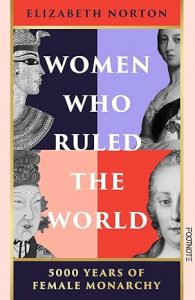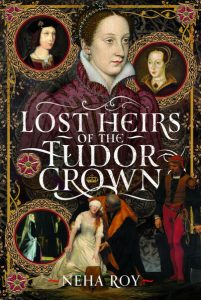Sarah J Hodder’s is the author of ‘The Queen’s Sisters: The Lives of the Sisters of Elizabeth Woodville’ which was published by Chronos Books in March 2020.
Sarah’s latest book, ‘The York Princesses: The Daughters of Edward IV and Elizabeth Woodville’ was published in April 2021
Buy ‘The York Princesses’:
Follow Sarah on Social Media
Twitter: @srhjyn8
Website: Under The Medieval Oak Tree
Facebook: Under The Medieval Oak Tree – S J Hodder
Many thanks to Sarah for answering my questions.
Why did you choose this subject for your book?
The fascination for me when writing my first book, The Queen’s Sisters, which focused on the lives of Elizabeth Woodville’s sisters, was the idea of family – of shared beginnings and experiences and of different perspectives of the same events. Although Elizabeth was the one who went on to become a high-profile figure, her siblings all began their life in much the same way that she did, yet her choice to marry Edward IV which led to her becoming England’s queen, also played a huge part in the lives of her other family members. All the events that followed on from her decision including, for instance, the deaths of her father and brothers, were part of her sisters’ stories too.
The same could be said for Elizabeth’s daughters, and therefore this book was the natural follow up to my first one. Only this time there was a reversal of fortune. Whereas Elizabeth Woodville’s sisters (and perhaps even Elizabeth herself) would have disappeared into the shadows of history unknown if she had not become queen, the York princesses began their lives in the limelight and grew up expecting to make good marriages and have their names written into the history books as queens of France or Scotland. Their place in our history books should have been assured, but the events of 1483-5 changed their destinies. All of a sudden, their status diminished and their life stories became less available to us. The narrative of Elizabeth of York, as the wife of Henry VII and England’s queen, is out there to find, although her story has arguably not been told as much as some other queens of England. But her sisters also lived alongside her, laughed and cried with her, and also have a story to tell. That is what I wanted to explore in this book.
What does your book add to previous works covering this subject?
I think that in most books that portray this time in our history, the focus is always on Elizabeth of York and as the wife of the first Tudor King and the mother of Henry VIII, she deserves all the recognition she gets. But it is only occasionally that we hear a passing mention of the beautiful Cecily or Bridget the nun. So, although I had to reduce the amount of detail I could have covered on Elizabeth of York, my aim was to give each of the princesses the same amount of attention and discover what happened to each of them after their father’s death and how they fared during the emergence of the new ruling Tudor dynasty.
Which Princess was the most interesting to write about?
I think Katherine of York proved the most interesting to me once I started to delve into her story. When I started to research her, I barely even knew she existed, she was just a name as the second youngest daughter. But life for Katherine was never dull, with fortune’s wheel spinning continuously for her. Katherine was just four years old when her father died so she would have had fewer memories of him than her elder siblings, nor possibly of the events that followed that saw her uncle take the throne and the disappearance of her brothers. But she would go on to lead an eventful life herself. Her husband ended up spending time in the tower on charges of treason, and during this time she experienced the death of one of her young sons and found herself having to depend on the generosity of her sister, the queen, to support her financially. But later on in life, she finally ended up making a comfortable life for herself in her own little kingdom of Devon. During her time at her sister’s court, Katherine seemingly helped to raise Henry VIII as a young lad and he repaid her with his respect and affection after he became King. As More wrote about her, ‘she was long time tossed in either fortune, sometimes in wealth, oft in adversity…’. Yet out of all her sisters, she was the great survivor and was still alive when Thomas More was writing about her.
What surprised you most researching this book?
I think the biggest surprise for me was how much Elizabeth of York really cared for and looked after her siblings. I think she has a reputation as a kind and generous woman and perhaps as the eldest, she took on quite a maternal role to her younger sisters during their troubled times. We can never really know about family relationships from this distance of time, but I think even more so than her mother perhaps, Elizabeth of York maintained that closeness to all of her sisters throughout her life. The image of the four princesses coming together at her funeral – Anne, Katherine, Cecily and Bridget – walking behind their sister’s coffin, dressed in their black mourning gowns with sweeping trains is a powerful one and testament to a close group of women coming together to mourn the loss of one of their own.
Which Princess was the most difficult to write about?
I think Princess Margaret was probably the hardest to write about as of course she did not even make it to her first birthday. But she lived and was part of their family story and therefore I wanted to include her. During her few months on earth in 1472 several important events occurred, including the death of their grandmother, Jacquetta the matriarch of the Woodville family so Margaret’s short life gave me the opportunity to focus on this year and how family life was for them as a whole during her few brief months on earth.
Did any of the sisters fulfil the original plan for them?
The youngest, Princess Bridget, who was not even three years old when her father died, spent her life as a nun at Dartford Priory, entering the convent at the tender age of just ten years old. Although we cannot know for sure if this was what had been planned for her from birth, it is very possible that it was, as it was not unusual for families to dedicate one of their children to the church. There also appears to be no reason why she could not have followed the path of her other sisters who were all supported by their sister when she became queen until they were of marriageable age. It is therefore extremely likely that Bridget did fulfil the destiny that was planned for her all along. Whether she was happy with her lot or whether she wished she could have had a life more like that of her siblings, we will never know.




































